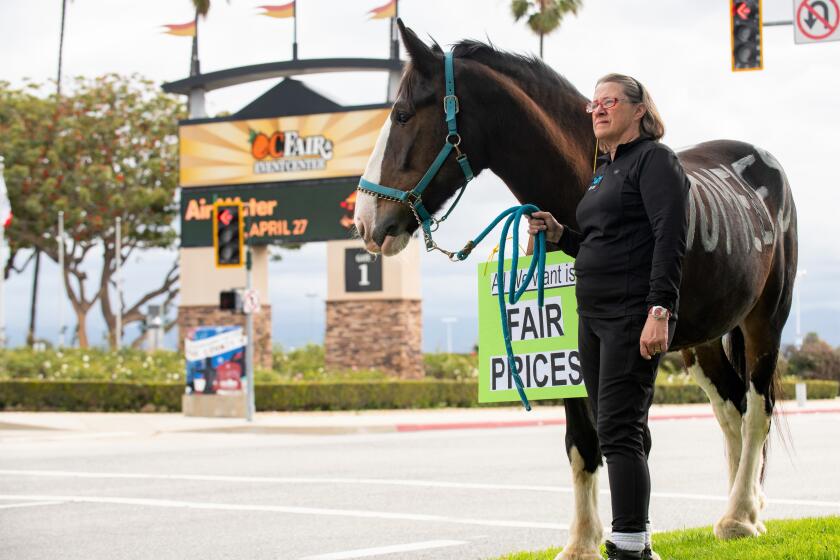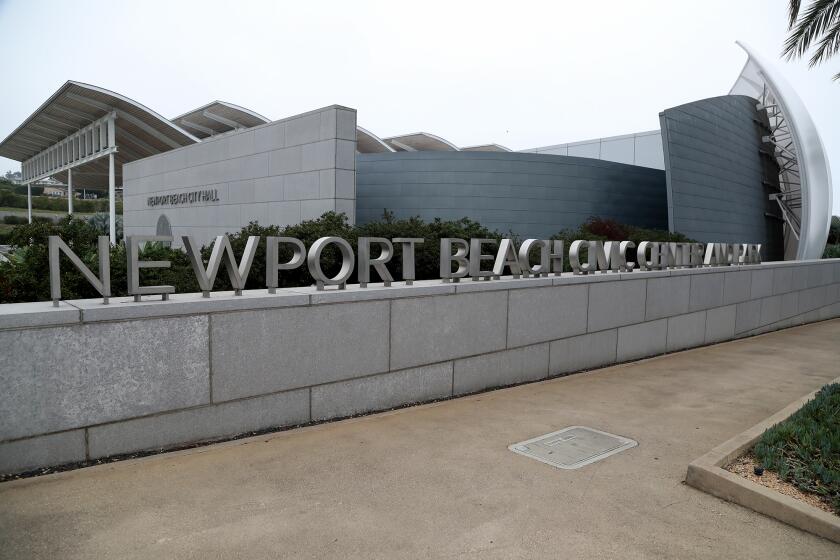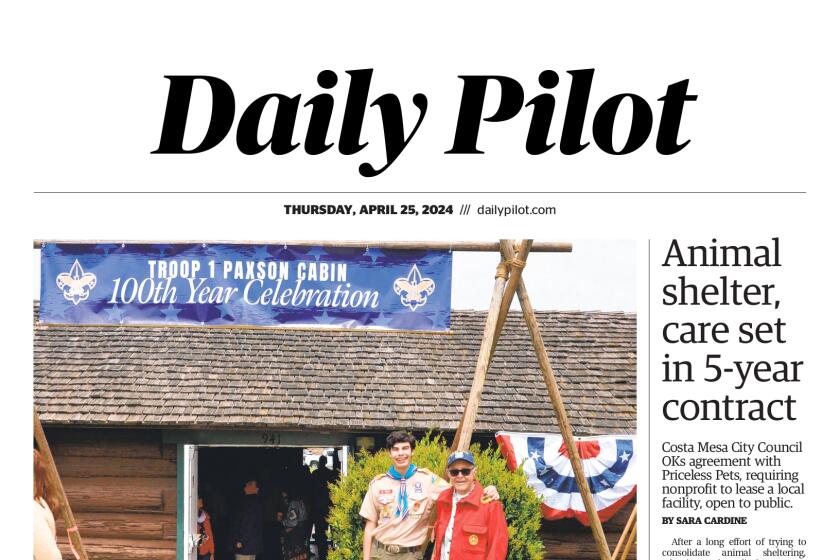Newport moves ahead with sewer rate increase
Newport Beach sewer rates are moving closer to their first increase in more than 10 years.
City utilities staff presented an updated proposed rate schedule to the City Council on Tuesday that showed the typical household bill going up by about $2.35 a month next year.
Sewer rates have not been adjusted since 2006, leaving the city wastewater fund at a structural deficit, said municipal operations director George Murdoch.
New rates, if approved, would be finalized at a hearing Sept. 12, with the increased rates effective Jan. 1. Rates would continue to increase incrementally through 2022.
Most residential wastewater customers currently pay a fixed charge of $4.50 per month and a use charge of 35 cents per hundred cubic feet of water used (a hundred cubic feet, or HCF, equals 748 gallons).
The proposed rate structure raises most residential fixed fees to $6.46 per month, with the per-HCF rate increasing to 38 cents. It continues to raise rates over the next four years, peaking in 2022 at $8.55 in fixed charges and 54 cents per HCF.
For the typical residential customer with an average wastewater use of about 12 HCF, the new rate structure would increase the total monthly bill next year from $8.63 to $10.99.
Sewer rates have increased modestly in the past 20 years. In 1996, the city raised the variable, per-HCF use rate from 15 cents to 20 cents. In 2005, it hiked the use rate another 10 cents, to 30 cents, and raised the fixed rate from $3.60 to the current $4.50. In 2006, it brought up the use rate to 35 cents. They have been unchanged since.
Councilman Will O’Neill pointed out that in 2010, the City Council at the time approved a sewer master plan that built in future rate increases. But those didn’t happen, leading to the deficit that is now seven years in the making.
“As George noted earlier, every year you don’t do a rate increase it compounds the money that would have been happening had that rate increase occurred in the first place,” O’Neill said. “So we have been operating at seven years right now at not only a structural deficit, but a compounding structural deficit that now requires the council to discuss these rate increases. And I’m really frustrated by that and I think the ratepayers are going to be frustrated by that too.”
Granny flats
More granny flats may soon be built around Newport.
The council approved a first reading of rules that bring the city in line with a new state law intended to expand affordable-by-design housing stock by making the units, also known as accessory dwelling units, easier to build.
Newport Beach has long had restrictive rules on accessory dwelling units, which are small, complete homes built on the same lots as larger single-family houses.
The new law allows cities continued discretion on zoning, lot and unit size, and aesthetics. But provided they meet the basic standards, the units would be approved without a public hearing.
This would generally exclude older parts of town with small lots and chronic parking issues, such as Newport Shores, Bayshores, Balboa Peninsula and Corona del Mar.
Also, the state law does not restrict homeowners associations from prohibiting accessory units within their own regulations.
Almost 19,000 Newport Beach home sites could be eligible to build an accessory unit, city staff said. A second reading of the rules will come before the council on Aug. 8.
A-frame signs
A-frame signs are a step closer to being allowed in the newly renovated Lido Marina Village.
The city generally prohibits A-frame signs, with the exception of the Corona del Mar commercial district. Lido Marina Village merchants want the same thing, staff said.
A-frame signs are portable, freestanding, two-sided signs, typically small and hinged at the top and wider at the bottom like an easel. The proposed rules would allow one sign per business space, up to 48 inches tall with up to 10 square feet per sign face. They could only be displayed just outside the business entrance during operating hours.
The Lido exception would be for a one-year trial period to determine if they’re suitable for the area. A second reading of the proposed ordinance would come before the council on Aug. 8.
Twitter: @Daily_PilotHD
All the latest on Orange County from Orange County.
Get our free TimesOC newsletter.
You may occasionally receive promotional content from the Daily Pilot.




